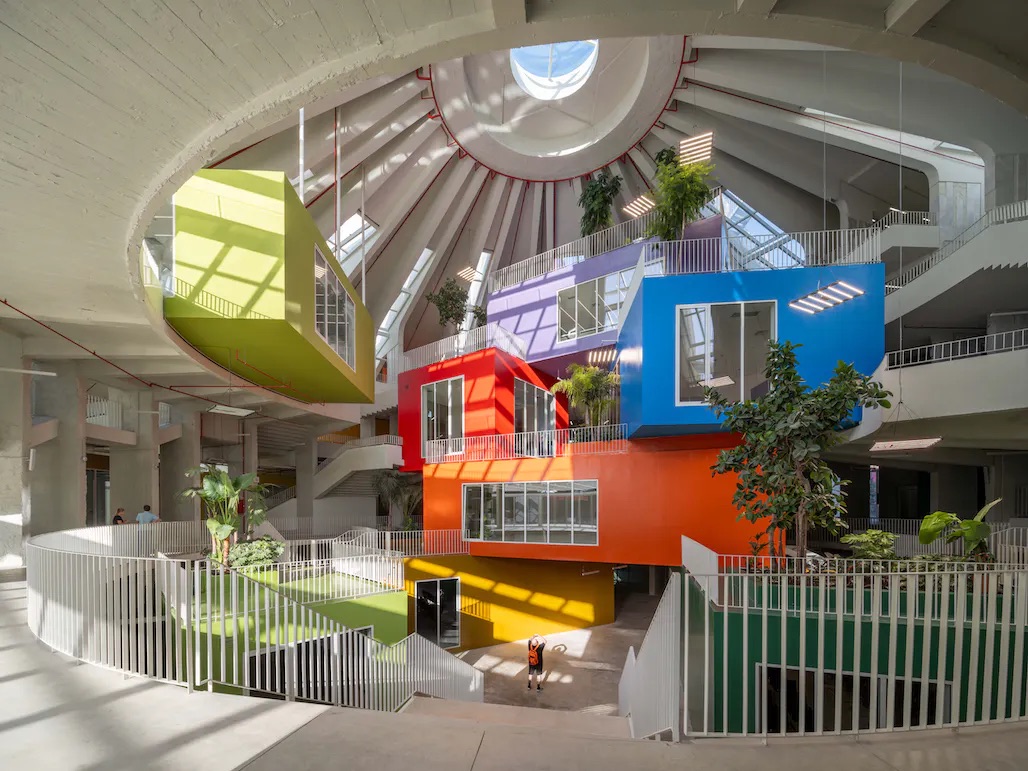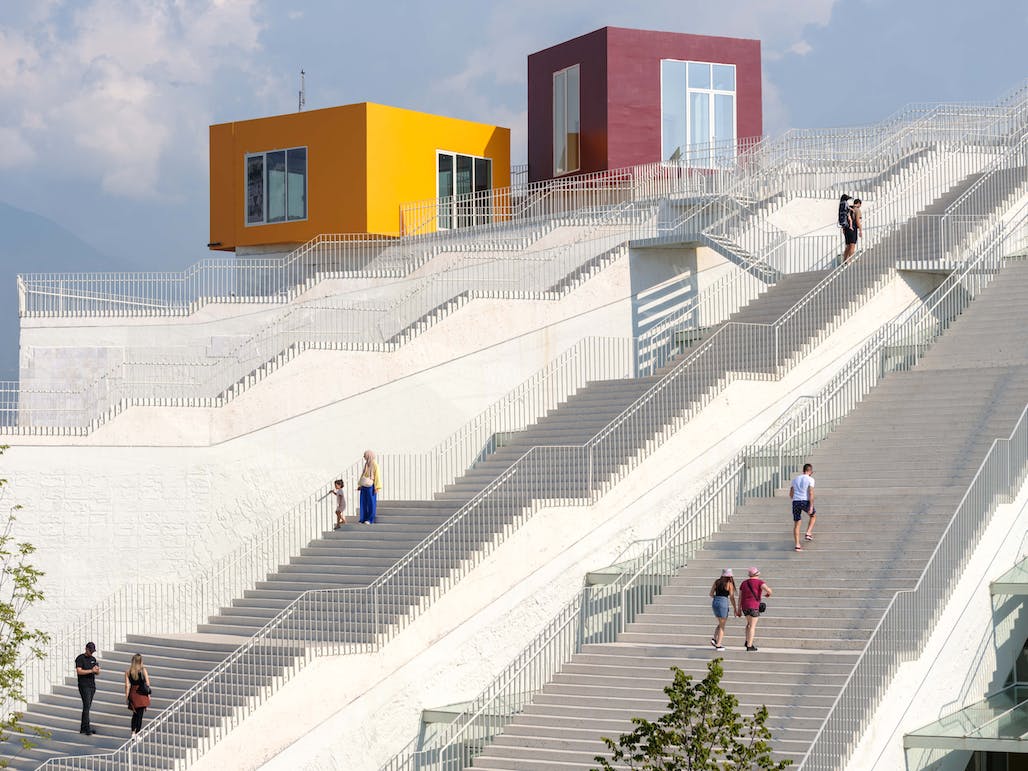For decades, the Pyramid of Tirana had been casting a pall over Albania’s capital city. Built in 1988 as a museum dedicated to commemorating the Eastern European country’s late communist dictator Enver Hoxha, the hulking concrete structure eventually fell into disrepair. It served as everything from a NATO base during the War in Kosovo and a nightclub to an event space over the years. Then, Albanian youth seeking to reclaim the aging Brutalist monument repurposed it as a hangout spot and canvas for graffiti, often scaling it to slide down its slopes. Grand plans to transform the monument into a cultural center came and went, and for years it sat hermetically sealed and inaccessible to the public. Windows were broken, homeless people slept in its hall, syringes littered the floor, and it stunk of urine.
Demolishing the structure proved neither popular nor sustainable. In 2017, the Albanian government announced plans to transform the concrete monolith into a vibrant cultural hub that would symbolize victory over Hoxha’s regime. They commissioned Dutch firm MVRDV to lead the renovation, which involved gutting the dank interior and building a multitude of stacked, colorful box-like structures inside and out that would house studios, classrooms, incubators, offices, and spaces for the nonprofit TUMO Tirana, which provides free after-school education in software, robotics, and animation for teenagers. Viewed from afar, the visual effect is akin to that of a festival—a desolate concrete behemoth burdened with the legacy of a despised dictator now teeming with activity and optimism.



